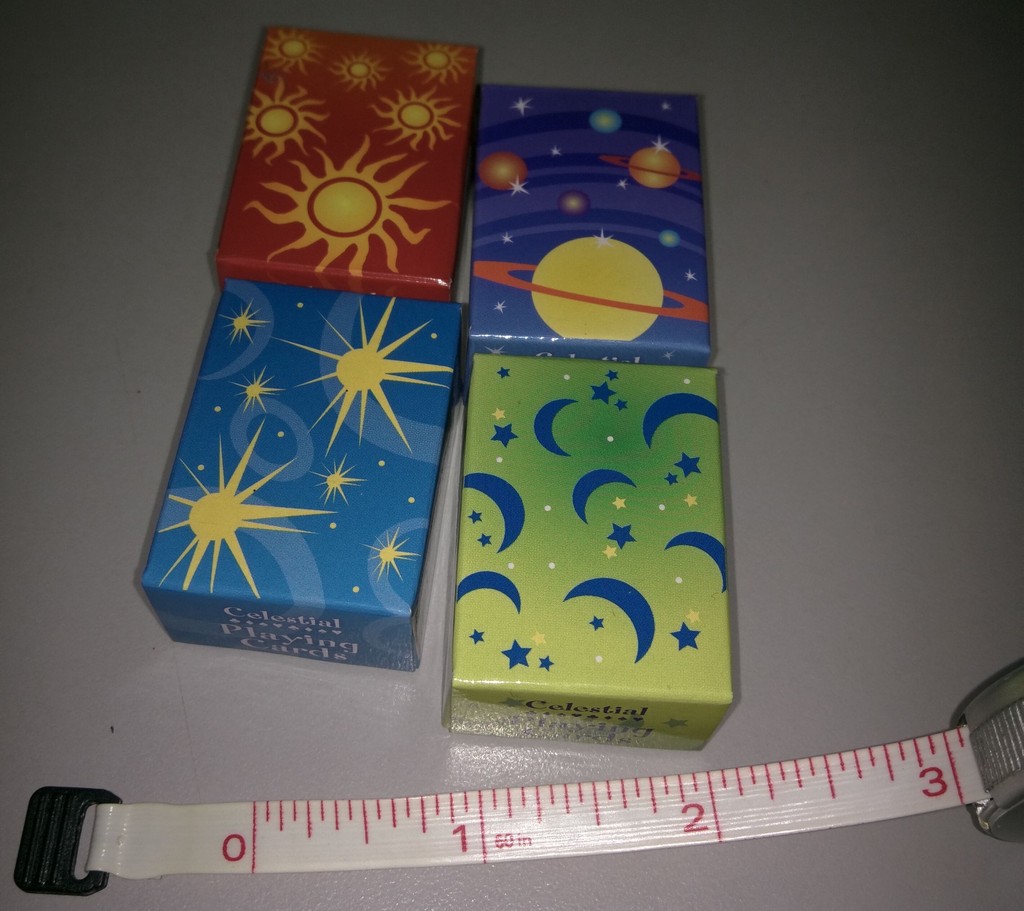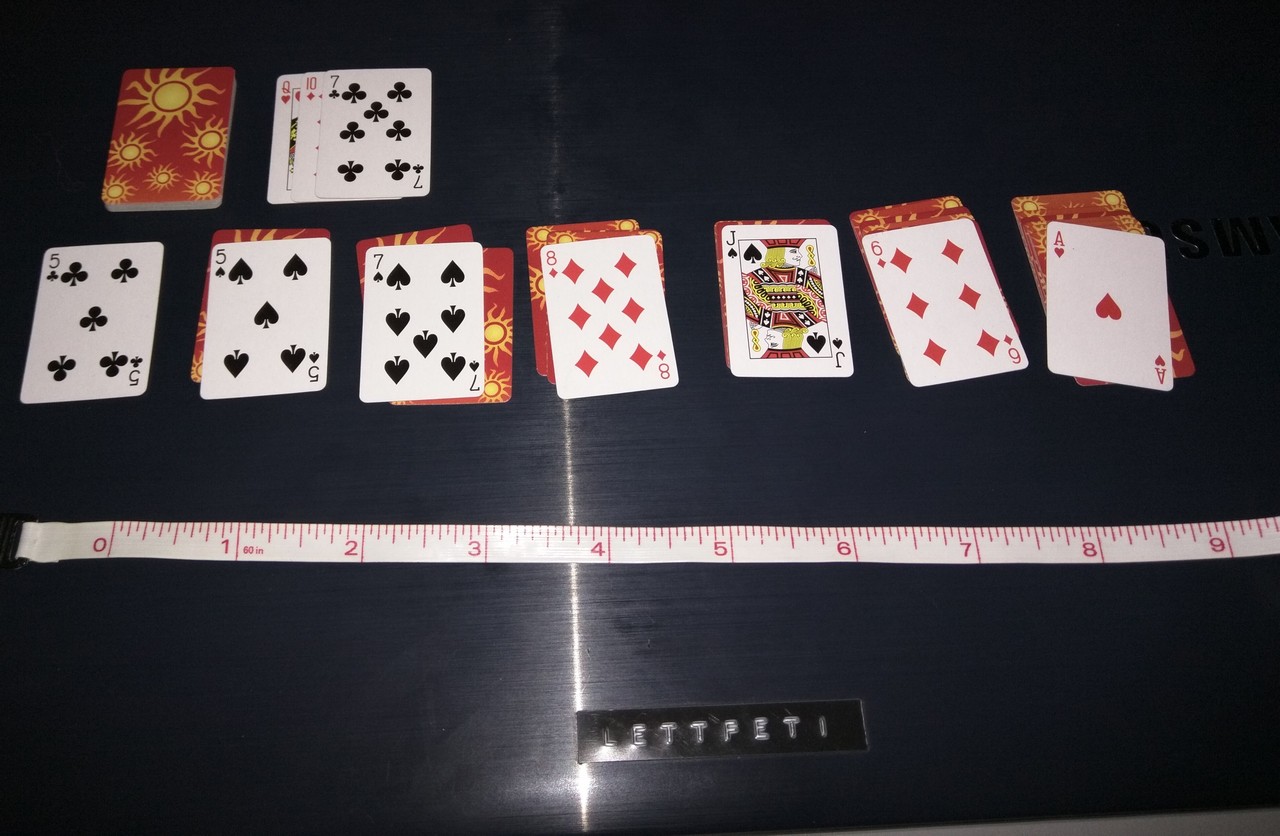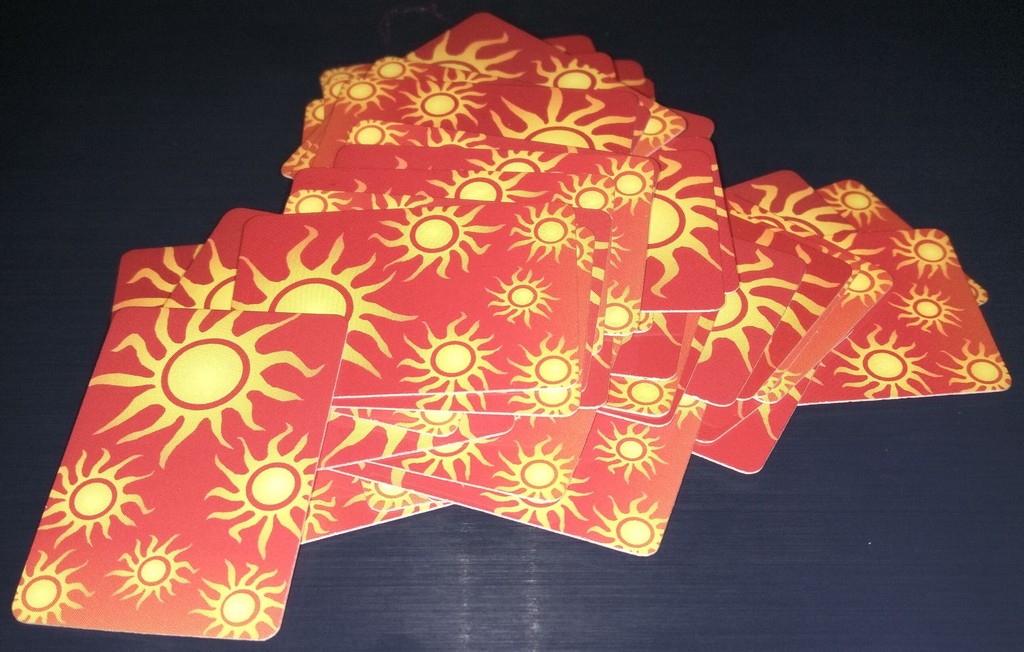
When I started to seriously begin accumulating decks of cards, I began to wonder to myself why most cards are the exact same size. How did the various companies - Bicycle, Brown & Bigelow, Liberty, Gemaco, Nintendo (yes, that Nintendo) - come to agree on one standardized card size? Okay, perhaps they didn't so much agree as they may have come to their own conclusions. I didn't really think this opening paragraph through very well.
Some basic research reveals that playing cards tend to be manufactured in "poker size" or "bridge size." The actual size difference is, honestly, negligible at best. A poker deck measures 3.5 inches tall by 2.5 inches wide (or 88.9mm by 63.5mm), while a bridge deck measures very slightly thinner (being 2.25 inches, or 57.15mm, in width). From my experience, it's rare that a deck of cards varies from these measurements. And why should they? These measures just happen to be the perfect size to fit neatly in a person's palm. And when your cards fit your palm, that makes it much easier to shuffle and deal. But let's suppose someone makes a deck of cards that's too big...or too small. What problems does that introduce to regular play?
When I was given the first of four "Celestial Playing Cards" decks (made for Toysmith in Washington state) as a gift, I decided that these would be perfect cards to carry around in a pocket, play in places where I don't necessarily have table space. Places like my computer desk. I set out to test that theory, and in that respect, they passed with flying colors. The cards even lent themselves to a throwaway Twitter joke about "playing card games on my laptop," of which I could not find the post in question and have recreated on a whim below.

Ha. Ha. Ha. [slow clap]
But with a small deck comes surprisingly large problems. Naturally, players with larger hands may find it difficult to grab the cards to move them, but they also do not flex very well, making them difficult to shuffle or lift from the table. I eventually found that the "best" way to shuffle this small of a deck (roughly 1 inch by 1 5/8 inches) was to dump them all into a big, messy pile. Such a shuffle does also introduce some quick wear to the cards, with at least one accidentally splitting apart (though it was quickly repaired).

Shuffling via 52 pick up is about the only way it works, from my experience.
Which does beg the question of why one would actually want this deck, if it's so uncomfortable to play with. Well, it's cheap (only a dollar a pack, from a local toy shop), and it fits in basically any space you need it to fit in. You could even deal a round of Canfield on your smartphone, though I question why you would want to, considering you could not then use said smartphone to take a picture for a joke. (Well. Maybe my priorities are a bit twisted here.)
In all seriousness, though, these cards represent one string, one divergence, of the various purposes of playing cards. You have professional cards - the kind used by the thousands at casinos, the kind that you'd buy once and use forever. You have trick decks, popular with party magicians. Then you have the novelty deck, the deck of cards that you don't necessarily play all your games with. The deck you break out at the poker game, yelling "Ante up!" as you slap it on the table, hoping that the rest of the boys crack up and say "Okay, where's the real deck?" Or maybe you're like me and just want something that fits in a pants pocket and can run a decent game of Klondike on a table the size of Webster's Dictionary, durability and awkward shuffling be damned.